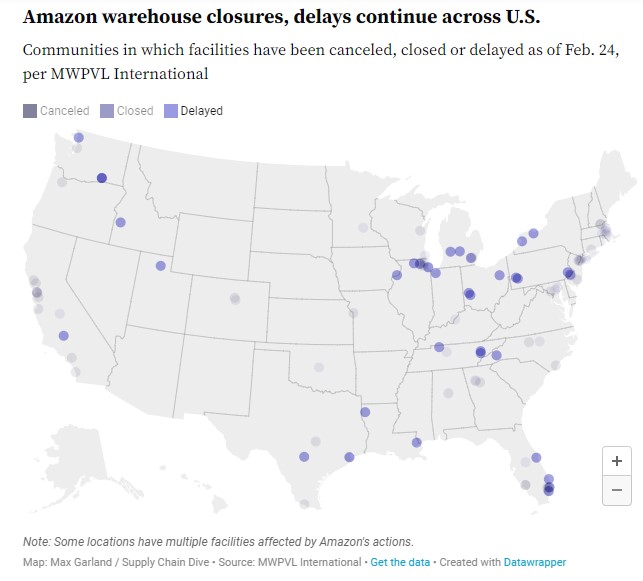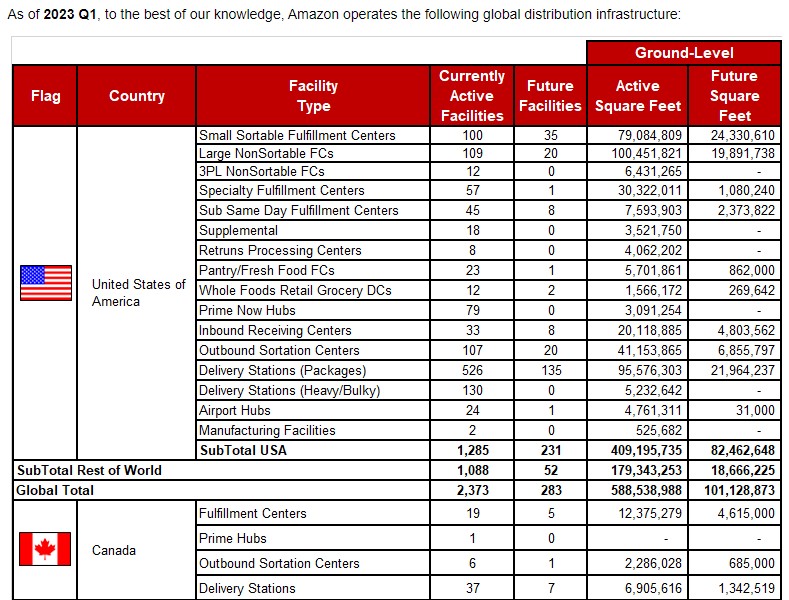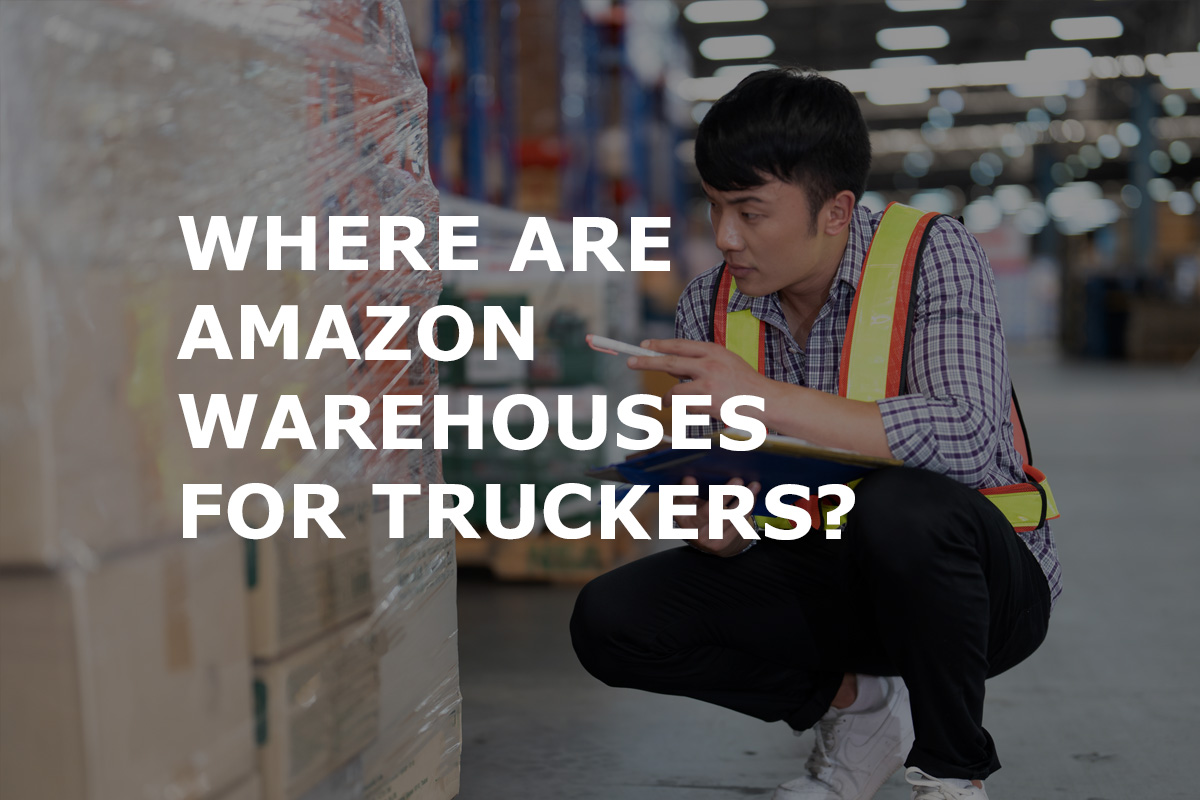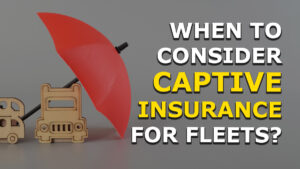Did you know that Amazon has 1,285 active facilities, fulfillment centers, and delivery hubs with another 231 coming? That’s nearly 500 million square feet of potential freight!
In a previous article, we discussed Amazon Relay versus Amazon Flex and the commercial insurance requirements to be able to haul these loads.
We mentioned that Amazon is one of the country’s largest employers who offer local, regional and relay delivery opportunities. The Amazon Relay program allows trucking companies, owner operators, and individuals to deliver Amazon box truck or semi-trailer loads while the Amazon Flex program allows independent contractors to deliver products using their personal vehicle.
But we never put in perspective how big the opportunity is to haul loads with Amazon.
So, secure your cargo, buckle up, and get ready to learn why you might want to consider hauling freight with Amazon.
Future Growth in Amazon Facilities

With the economic decline in 2022, Amazon had to shift strategies after doubling the size of its fulfillment network during the COVID pandemic.
Right now, Amazon has decided to cut plans for dozens of warehouses to reduce operating costs and delay hundreds of facilities for the coming years.
Amazon also moved to FedEx and UPS strategies by shifting its Air network operations to a hub-centric model.
Under its previous national distribution model, Amazon would have to ship an ordered product from other parts of the country if a local fulfillment center didn’t have it in stock. This increased the company’s cost to fulfill the order while lengthening delivery times.
With its regionalized fulfillment model now in place, Amazon is looking to ramp up its next-day and same-day delivery activity.
Types of Amazon fulfillment centers, distribution centers, and hubs
Amazon has over a dozen types of facilities that hold freight. These are:
- Small sortable fulfillment centers
- Large non-sortable fulfillment centers
- 3PL non-sortable fulfillment centers
- Specialty fulfillment centers
- Sub same day fulfillment centers
- Supplemental
- Returns processing centers
- Pantry/Fresh food fulfillment centers
- Whole Foods retail grocery distribution centers
- Prime Now hubs
- Inbound receiving centers
- Outbound sortation centers
- Deliver stations for packages
- Delivery stations for heavy/bulk
- Airport hubs, and
- Manufacturing facilities
You can see maps of these sites here.

Inbound cross dock network has been developed by Amazon to streamline the flow of goods into the fulfillment center network.
These facilities are similar to import distribution centers in that they are used as inventory receiving, break bulk and storage buffers for overseas import containers incoming from foreign vendors.
After the goods have arrived at the ports, they are received into the IXD facility and held until such time that the fulfillment center needs to be replenished with inventory. Merchandise is aggregated into truckloads and then transported to the fulfillment center.
Regional sortation centers increase control over the outbound transportation of packages within its own distribution network.
The purpose of these facilities is to sort packages to pallets by zip code so that they can be transferred to an Air Hub (for out of region packages), or to an Amazon Delivery Station, or to the USPS post office that is responsible for the zip code.
Last mile delivery facilities are designed to service a 45-mile radius and they are typically positioned within larger metropolitan cities across the country although this is starting to change as these facilities are now being opened in smaller market areas.
The delivery station’s primary role is to sort packages for outbound routes to enable last mile delivery to customers within a tightly defined urban area.
Often deliveries are performed by Amazon Delivery Service Partners with the Amazon Sprinter vans and by independent Amazon Flex drivers.
Amazon Relay suspends carriers for safety scores over 60%
Amazon Relay enables carriers to tap into the Amazon load board network, technology, and safety-first culture to build and grow your fleet or Amazon owner operator businesses.
The current Amazon standard is enforcing the suspending of carriers from the Amazon Relay Load board if their Company BASIC Score (SMS score) is over 60%.
Can suspended Amazon carriers apply for reinstatement to Amazon Relay?
Yes, if your company is operating within Amazon’s standards, you can send your improved BASIC score to Amazon for further review. Return to Relay will be subject to Amazon’s discretion.
However, while FMCSA may allow your company to legally operate, if your company’s safety record still does not meet Amazon’s strict safety standard, they will not reinstate you.
To improve your BASIC percentile or SMS safety score, we recommend carriers go above and beyond meeting DOT regulations, not “just meet” the bare minimum requirements.
At CNS, our DOT Compliance Programs focus on Proactive Safety Management (PSM) ensuring that your fleet’s safety and compliance is always in order and exceeds the expectations of the FMCSA.
Our PSM Motor Carrier Program includes:
- ELD management
- Driver Qualification File Management
- New driver on-boarding
- Driver safety meetings
- CSA score management
- Policies and handbooks
- Vehicle maintenance
- and more
Learn more about our DOT Compliance Programs
What type of insurance is required for Amazon Relay?
Amazon Relay works with the following equipment types:
- Tractor: Day cab, Box Truck, and Sleeper Cab
- Trailers: 28’ Trailer, 53’ Dry Van, and Reefer
If you just have a semi, their load board can filter loads by Drop and Hook that could be one-way or round trip. For Amazon box truck loads, if you have a 26′ box truck, the load board can filter loads in your area, pay rate, and more.
Carriers must also have all the required insurance policies including:
- Commercial General Liability not less than $1,000,000 per occurrence and $2,000,000 in the aggregate
- Auto Liability not less than $1,000,000 per occurrence, including a trailer replacement coverage of $50,000
- Cargo coverage of least $100,000
- Workers’ Compensation insurance in all jurisdictions where your company operates
- Employer Liability not less than $100,000 per occurrence
Fill out the information below and we can get an Amazon Relay insurance quick quote started for you.
If you have any questions or concerns, please email info@cnsinsures.com.






